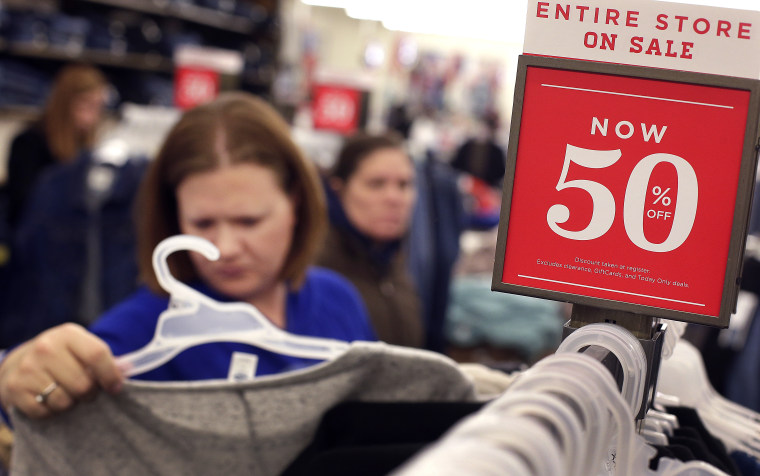WASHINGTON - U.S. retail sales fell in December as unseasonably warm weather undercut purchases of winter apparel and cheaper gasoline weighed on receipts at service stations, the latest indication that economic growth braked sharply in the fourth quarter.
Other data on Friday showed producer prices fell last month on weak energy costs and modest gains in the price of services, suggesting that inflation could struggle to reach the Federal Reserve's 2 percent target this year.
The Commerce Department said retail sales slipped 0.1 percent after rising 0.4 percent in November. For all of 2015, retail sales rose 2.1 percent, the weakest reading since 2009, after rising 3.9 percent in 2014.
U.S. Stock Markets: Dow Plunges as Oil Prices Resume Fall
Retail sales excluding automobiles, gasoline, building materials and food services fell 0.3 percent after advancing 0.5 percent the prior month. These so-called core retail sales correspond most closely with the consumer spending component of gross domestic product.
The retail sales report joined weak data on construction, manufacturing and export growth that have suggested growth cooled significantly in the final three months of 2015.
The economy has been hammered by a strong dollar and sluggish global demand, which have undermined manufacturing and export-oriented industries. Business efforts to cut an inventory overhang and energy sector spending cuts have also been a drag.
In a separate report the Labor Department said its producer price index slipped 0.2 percent after increasing 0.3 percent in November. In the 12 months through December, the PPI declined 1.0 percent after falling 1.1 percent in November. December marked the 11th straight 12-month decrease in the index.
Producer prices fell 1.0 percent in 2015 after rising 0.9 percent in 2014.
Coming on the heels of a report on Thursday showing a steep drop in import prices in December, weak producer prices suggest that an anticipated rise in inflation will probably fall short of the Fed's 2 percent target.
Inflation, which has been tamed by dollar strength, tepid wage growth and cheaper oil, is expected to rise this year as 2015's weak figures fall out of the calculation. However, persistently low readings could limit the boost from the favorable so-called base effects.
The inflation outlook will likely determine the timing of further interest rate increases after the Fed last month raised its key overnight lending rate by 25 basis points to between 0.25 and 0.50 percent, the first rate hike in nearly a decade.
Prices for U.S. Treasury debt rose on the data, while the dollar fell against the yen. U.S. stock index futures extended losses.
The core retail sales drop last month could prompt economists to lower their fourth-quarter GDP estimates, which currently range between a 0.5 percent and a 1.4 percent annual rate. The economy grew at a 2 percent pace in the third quarter.
Auto sales were flat after rising the prior month. Receipts at service stations fell 1.1 percent after decreasing 1.3 percent in November. Sales at clothing stores dropped 0.9 percent. Receipts at electronics and appliance outlets fell further last month.
But there were pockets of strength. Sales at online retailers and sporting goods and hobby stores rose. Receipts at building materials and garden equipment stores increased solidly, likely boosted by warm temperatures. Furniture store sales rose last month.
